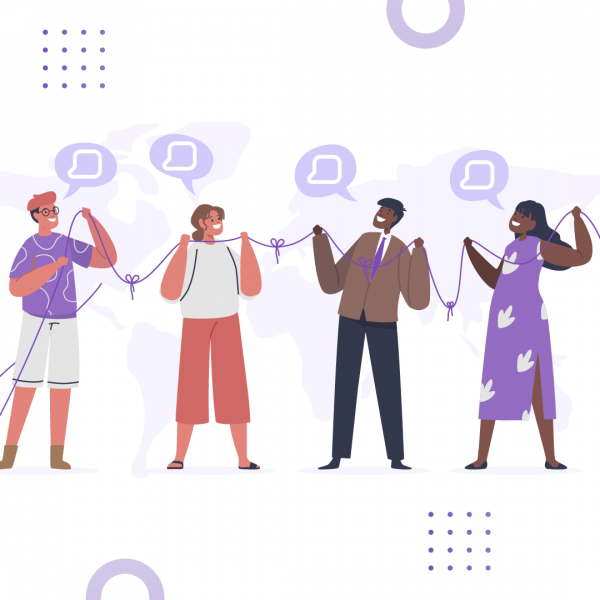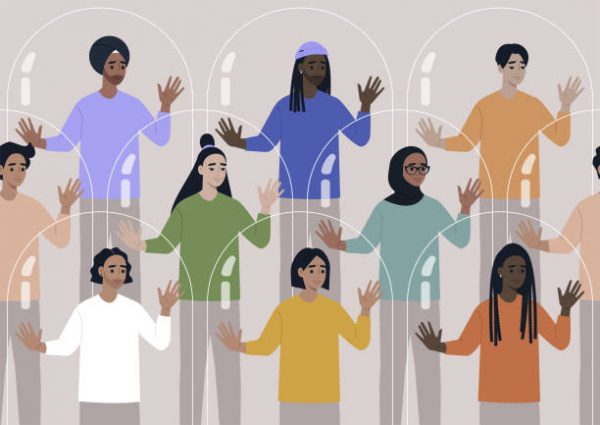
We’ve had a seismic shift to remote work in the wake of the pandemic, posing unique challenges to diversity, equity, and inclusion (DEI). Now, we navigate virtual corridors instead of office hallways, and our collective heartbeat is heard through screens, not shared spaces.
But does this inherently isolated environment risk silencing the symphony of diverse voices?
Balancing DEI in a remote work setting can indeed feel like a challenge, but we create an authentic virtual workspace that embodies these principles.
This guide aims to provide you with a clear, actionable, step-by-step approach to weaving DEI into the very fabric of your remote team’s culture. While it isn’t a one-size-fits-all solution, we have compiled a set of tried and tested steps adaptable to your team’s unique dynamics and needs.
So let’s get started.
Step 1: Building a Diverse Talent Pipeline
Building a diverse team doesn’t happen overnight, but it’s the foundation you need to lay to ensure the success of your DEI initiatives. You need to make a conscious effort to broaden your recruitment reach and refine your hiring practices.
To help you build a team that’s as diverse as the world we live in, you can:
- Engage with organizations and job boards that cater to diverse audiences.
- Utilize platforms that can help you connect with potential candidates from various backgrounds, experiences, and perspectives.
- Critically assess your hiring practices to determine if they are fair, inclusive, and objective.
- Consider implementing structured interviews and blind hiring techniques.
For example, imagine you’re a tech firm aiming for more diversity. You might collaborate with Women Who Code or Black Girls Code. Using a tool like Applied, you facilitate blind hiring, focusing on skills and qualifications, not personal identifiers.
Step 2: Ensuring Equity in Policies and Systems
Aside from building a diverse team, you need to instill equity within your organization’s policies and systems. It’s about leveling the playing field and giving each team member the tools and opportunities they need to succeed based on their individual circumstances.
Here are key considerations to ensure equal opportunities for all:
- Policies Review: Assess if your policies, such as flexible work hours or parental leave, accommodate diverse backgrounds and unique needs.
- Systems Assessment: Ensure your systems, including communication channels and performance reviews, provide a fair, transparent framework.
- Digital Accessibility: Make sure your digital tools are accessible to everyone, considering varying abilities and tech proficiency levels.
- Time Zone Considerations: Develop practices that account for global time zone differences, ensuring inclusivity in communication and decision-making.
- Communication Styles: Recognize and accommodate varied communication styles within your team.
Step 3: Promoting Inclusion in a Virtual Environment
Remote work can often feel very isolated, and promoting inclusion requires innovative thinking. It’s about ensuring each team member feels valued, heard, and a sense of belonging, irrespective of their physical location.
Here are some things you can do:
- Foster open communication and encourage team members to voice their ideas, concerns, and feedback.
- Recognize and celebrate diverse cultures, festivals, and milestones.
- Build a sense of community by hosting virtual team-building activities, diverse holiday celebrations, or themed meetings.
- Get leadership involved and ensure they regularly engage with teams.
- Bring different perspectives together through diverse project teams.
For example, a tool like Donut on Slack can randomly pair team members for a virtual coffee chat. This not only helps team members get to know each other better but can also spark creative ideas. And tools like Namecoach can help ensure your teams have the confidence to pronounce names correctly if they’ve never interacted before.
Step 4: Educating the Team about DEI
Education is a powerful tool for promoting DEI within your remote team. It’s crucial to ensure that every team member grasps the importance of DEI, understands its implications, and is equipped to put these principles into practice. Here’s how:
- Training Programs: Set up regular training sessions to address issues like unconscious bias, cultural sensitivity, and inclusive communication.
- Guest Speakers: Invite experts or guest speakers to provide different perspectives and deeper insights.
- Open Discussions: Encourage open discussions about DEI, providing a platform for team members to share experiences and learn from each other.
- Resources and Materials: Provide team members with resources, such as articles, books, podcasts, or webinars on DEI.
- Continuous Learning: Promote a culture of continuous learning, where team members are encouraged to broaden their understanding of DEI over time.
For example, the tech company Rainforest QA has set up monthly open forum discussions where employees can share experiences and learn from each other.
Step 5: Leveraging Technology to Support DEI
Technology is by far one of the most important allies to your DEI efforts. It can help create connections, track progress, and ensure accessibility. Just ensure that you implement it strategically.
Here are ways to leverage technology to support DEI:
- Use inclusive communication tools to ensure everyone has the confidence to connect with one another
- Implement platforms that promote collaborative work and provide equal opportunities for participation
- Utilize software for blind recruitment processes, helping minimize unconscious bias in hiring
- Use online learning platforms to provide DEI education, ensuring access for all team members
- Employ anonymous feedback tools to gather insights about your DEI practices, helping identify areas for improvement
For example, Salesforce utilizes communication tools like Namecoach to help their employees accurately pronounce names and build strong relationships. Through mindful use of tools like this and many others, they demonstrated their commitment to DEI and allowed them to build a strong remote workforce.
Step 6: Continuously Improving and Adapting DEI Strategies
The final step to making remote work diverse and inclusive is to understand that DEI is a journey, not a destination. Just as the world around us evolves, so too should your DEI strategies.
An effective DEI strategy is dynamic, adaptable, and responsive to changes. It involves staying on top of new DEI research, listening to feedback from team members, and monitoring success. It’s about fostering an ongoing dialogue, not a one-time conversation.
Keep in mind, the goal isn’t perfection but progression. Mistakes may happen, and that’s okay. They provide valuable learning opportunities and a chance to adjust and improve. The key is to have a system in place that allows for regular evaluation and adjustment of your DEI strategies.
Now It’s Your Turn
Having a clear understanding of how to cultivate diversity and inclusion in remote work settings is a significant first step. Now, it’s your turn to take action.
Starting on this journey might seem overwhelming, but remember, even the most profound changes start with small steps—something as simple as ensuring everyone has the confidence to pronounce each other’s names without hesitation—And Namecoach can help.
Our specially designed tool integrates with your communication tools to help your team correctly pronounce names. This may seem like a small gesture, but the ripple effect it can have on someone’s sense of belonging and understanding is immense.
Names often play an essential role in defining an individual’s identity, especially in a world where remote work is increasingly common. Recognizing and respecting that identity is the very essence of fostering an inclusive environment.By choosing Namecoach, you’re not just investing in a tool—you’re taking a vital step towards creating a workspace where everyone feels valued, heard, and included. Schedule a demo and see just how easy it is to take that first step.









